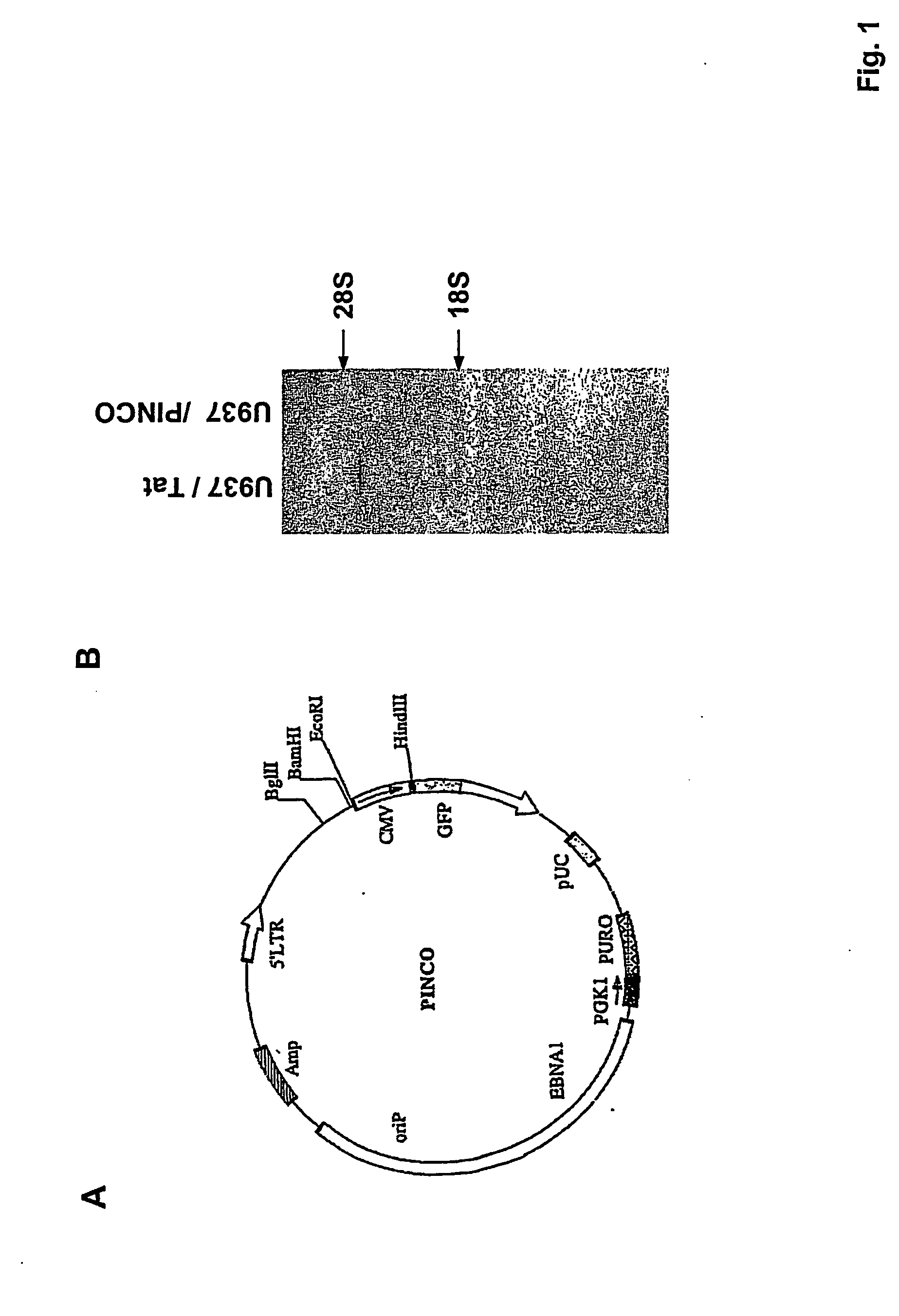Novel mechanism for hiv-1 entry into host cells and peptides inhibiting this mechanism
a technology of host cells and peptides, which is applied in the field of new mechanisms for hiv-1 infection, can solve the problems of difficult progress, limited therapeutic regimen, and inability to achieve consistent and long-term clinical benefits of triple therapy, and achieve the effect of enhancing virus entry into permisive cells
- Summary
- Abstract
- Description
- Claims
- Application Information
AI Technical Summary
Benefits of technology
Problems solved by technology
Method used
Image
Examples
examples
[0072] Example I
[0073] This example is illustrated in FIG. 7. Example I shows the effect of soluble peptides [the gp120 variants SEQ ID NO. 40 (RDKKKK), 41 (RDKKKQ), 42 (RDKKKV), 43 (DRKKKV), 45 (KDKKEK), 46 (RDKKQK), 47 (RDKKQQ), 48 (RDKQRK), 49 (RDKQQK), 50 (RDKVQK), 51 (RNKRKQ), 52 (RDKTQK) and the mutants SEQ ID NO. 121 (RDKVKA), 122 (RDAVKK), 123 (RDKVAK), 124 (RDKVAA), 125 (RDAVKA), 126 (RDAVAK)] on the entry of TAT- / gp120-LV into C8166 cells. TAT- / gp120-LV is a TAT-defective vector (see Methods and References therein). The number of transduced cells is evaluated as percent of GFP-positive cells after 72 h. The graph shows the percent variation of entry (i.e. of the percent variation in transduced cells) following incubation with 100 μM of the peptides. The effect of the mutant peptides is investigated to confirm the specificity of the mechanism. This example shows that in the absence of TAT none of the peptides significantly inhibits TAT-gp120 -LV entry.
[0074] Example II
[0...
PUM
 Login to View More
Login to View More Abstract
Description
Claims
Application Information
 Login to View More
Login to View More - R&D
- Intellectual Property
- Life Sciences
- Materials
- Tech Scout
- Unparalleled Data Quality
- Higher Quality Content
- 60% Fewer Hallucinations
Browse by: Latest US Patents, China's latest patents, Technical Efficacy Thesaurus, Application Domain, Technology Topic, Popular Technical Reports.
© 2025 PatSnap. All rights reserved.Legal|Privacy policy|Modern Slavery Act Transparency Statement|Sitemap|About US| Contact US: help@patsnap.com



